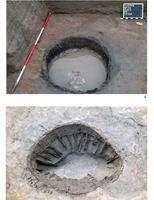

Figure 59: Withy-bed in a nature reserve (Eschplaat). Photo L.I. Kooistra.
Figure 60: Willow baskets from Tiel-Passewaaijse Hogeweg (Heeren 2006, plate 6).
Stone buildings were absent in the settlements of Tiel and those in Geldermalsen-Hondsgemet, Kesteren-De Woerd, Houten-Tiellandt and Wijk bij Duurstede-De Horden. All constructions – byrehouses, separate stables, granaries and wooden linings of wells – were made from wood. Besides, wood was essential as fuel and for making artefacts. Nevertheless, we still know little about woodland management and wood use, because the wood used for construction, tools and household goods has almost all decayed. Only at the bottom of wells is the wooden lining preserved. For the Dutch River Area, most information on wood is from Geldermalsen-Hondsgemet and Houten-Tiellandt, but there are also some data for Tiel and Kesteren. These data not only derive from wood analysis but also from analysis of botanical macro remains and pollen.
Among the wood and pollen spectrum, alder (Alnus) and willow (Salix) are most common. These tree species grow in humid to wet parts of the landscape. They can be found in flood basins. Willow also grows on the low streamridges (point bars) on the convex banks of active rivers. Tree species of higher ground such as ash, elm, oak, field maple and hazel are rare.
Wood is regularly reused in the linings of wells. Some of this wood was imported, such as the staves of wine barrels, but the indigenous wood also seems to have had another primary use. All data indicate streamridges with open land, and scattered trees and shrubs. Most of the wood, as far as it has been preserved, was sourced from the flood basins and the convex banks of active rivers. Theoretically, it is possible that the best quality wood – from streamridges and levees of the River Linge – was used for the construction of buildings, and that only reused wood or the remnants of wood that was used in buildings was used for wells. The results of the palynological analysis suggest that this is an unlikely explanation. Timber from buildings has only been found once in the Dutch River Area. At the site of Rumpt in Geldermalsen, remains of alder posts were found in Bronze Age houses (Brinkkemper et al. 2002, 509-21). Although this is an earlier period, it is thus not unthinkable that the straight trunks of alder were used for house building in the Dutch River Area.
Although wood was imported in the Roman period, this seems to have been incidental. Only wood that reached the settlement as wine barrels or for some other reason was subsequently reused. There are no indications for a wood industry, as a sideline pursued by the local population. The exploitation of the remnants of wood on the streamridge and flood basins seems to have been limited to local use. It does seem that willow especially was managed in the flood basins of the Dutch River Area (Fig. 59). In Tiel-Passewaaij, Geldermalsen-Hondsgemet and Wijk bij Duurstede-De Horden (Vos 2002), large baskets were found that were made from one- to two-year-old willow twigs (Fig. 60). The age of the twigs as well as the uniformity of their diameter indicates regular harvesting of willow.


Figure 59: Withy-bed in a nature reserve (Eschplaat). Photo L.I. Kooistra.
Figure 60: Willow baskets from Tiel-Passewaaijse Hogeweg (Heeren 2006, plate 6).
© Internet Archaeology/Author(s)
URL: http://intarch.ac.uk/journal/issue27/5/3.4.6.html
Last updated: Tue Nov 10 2009